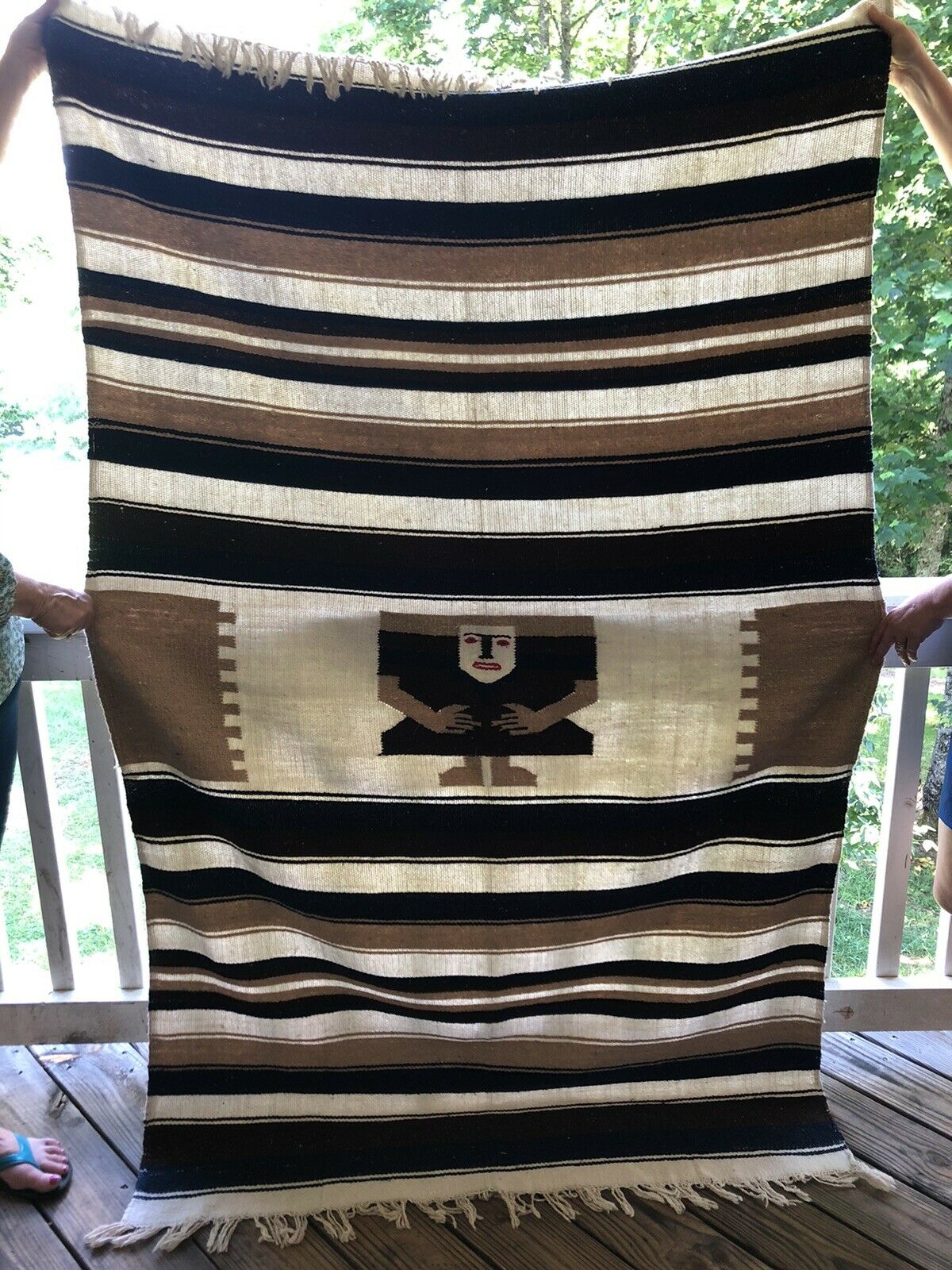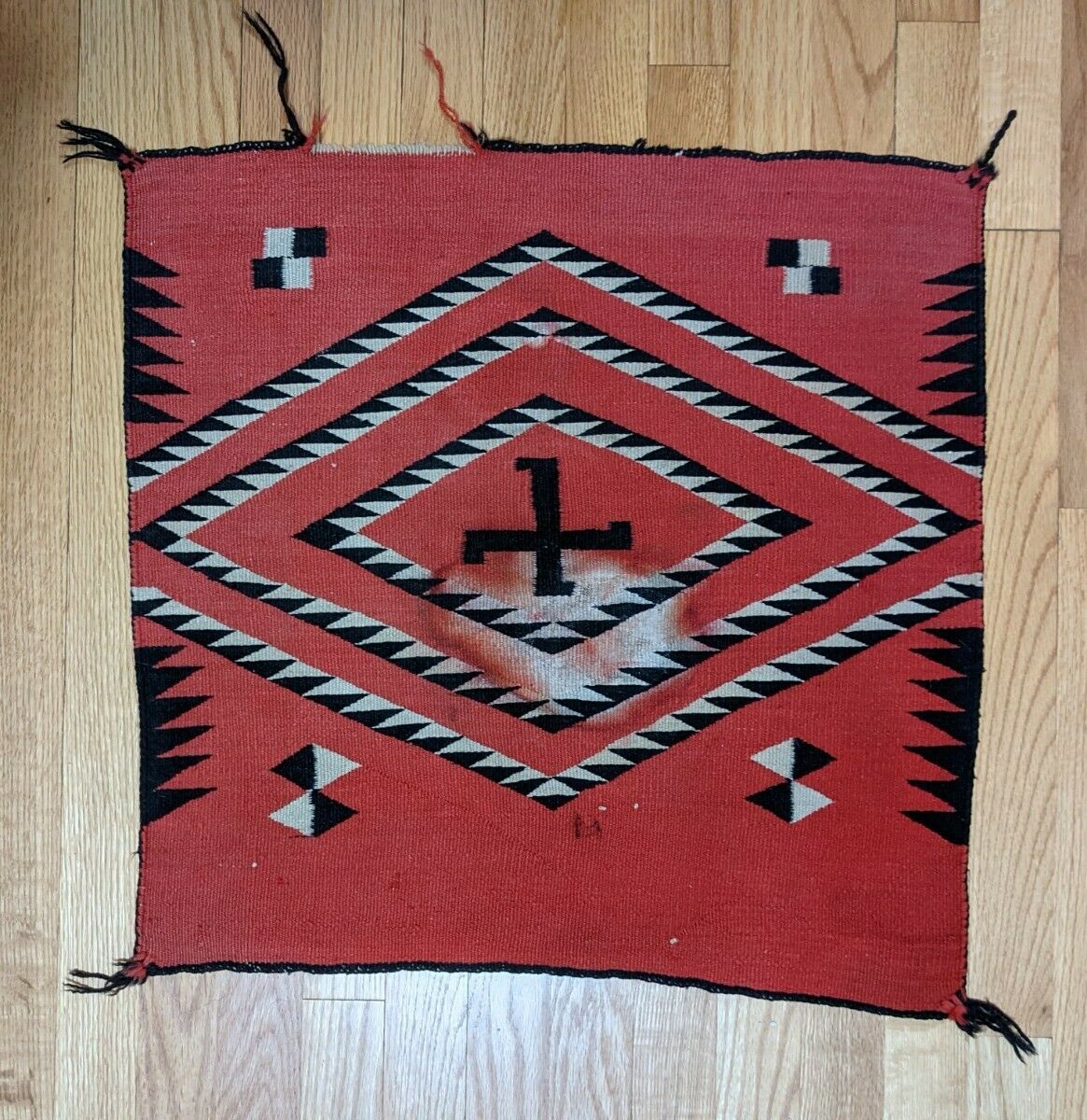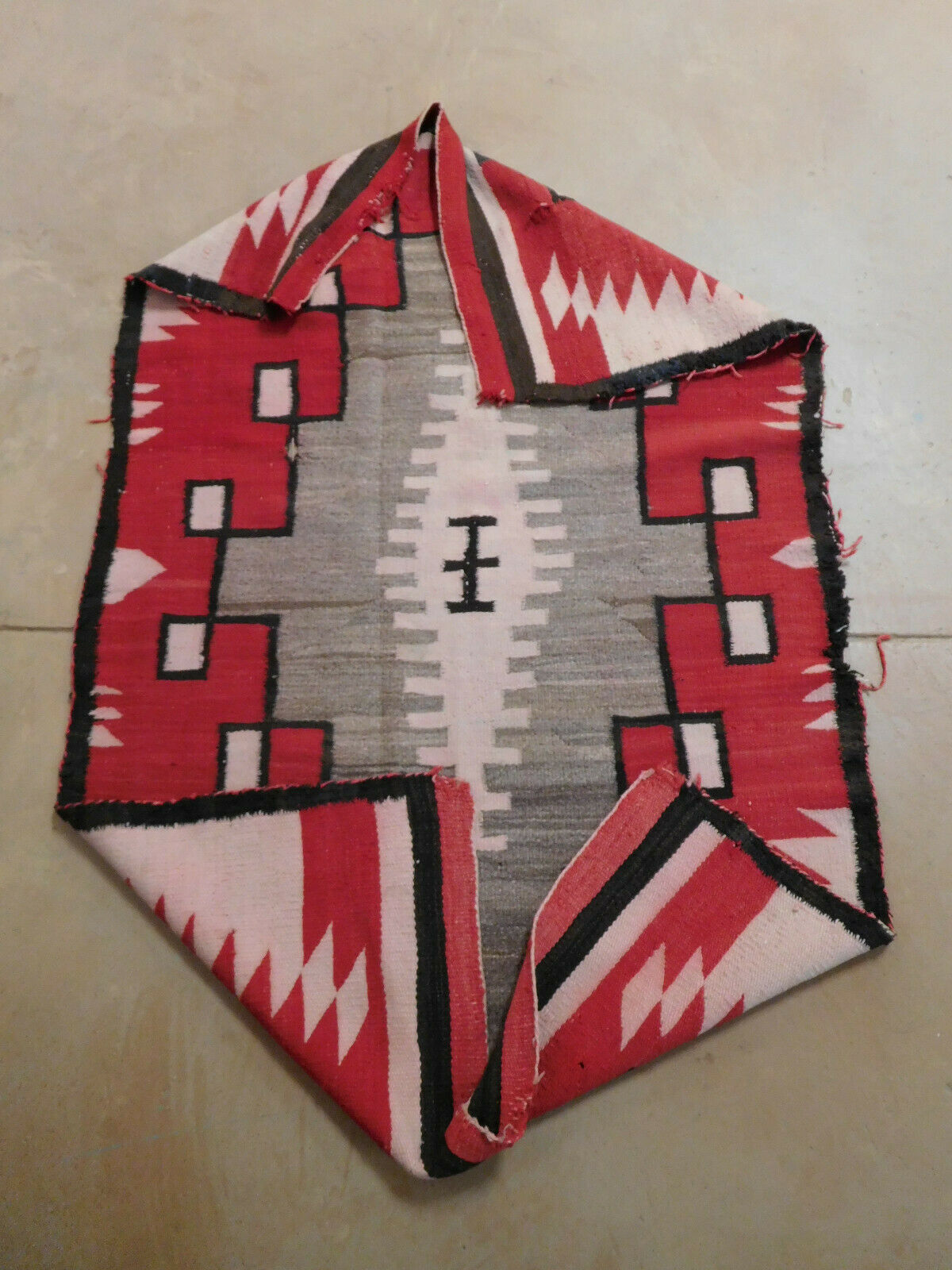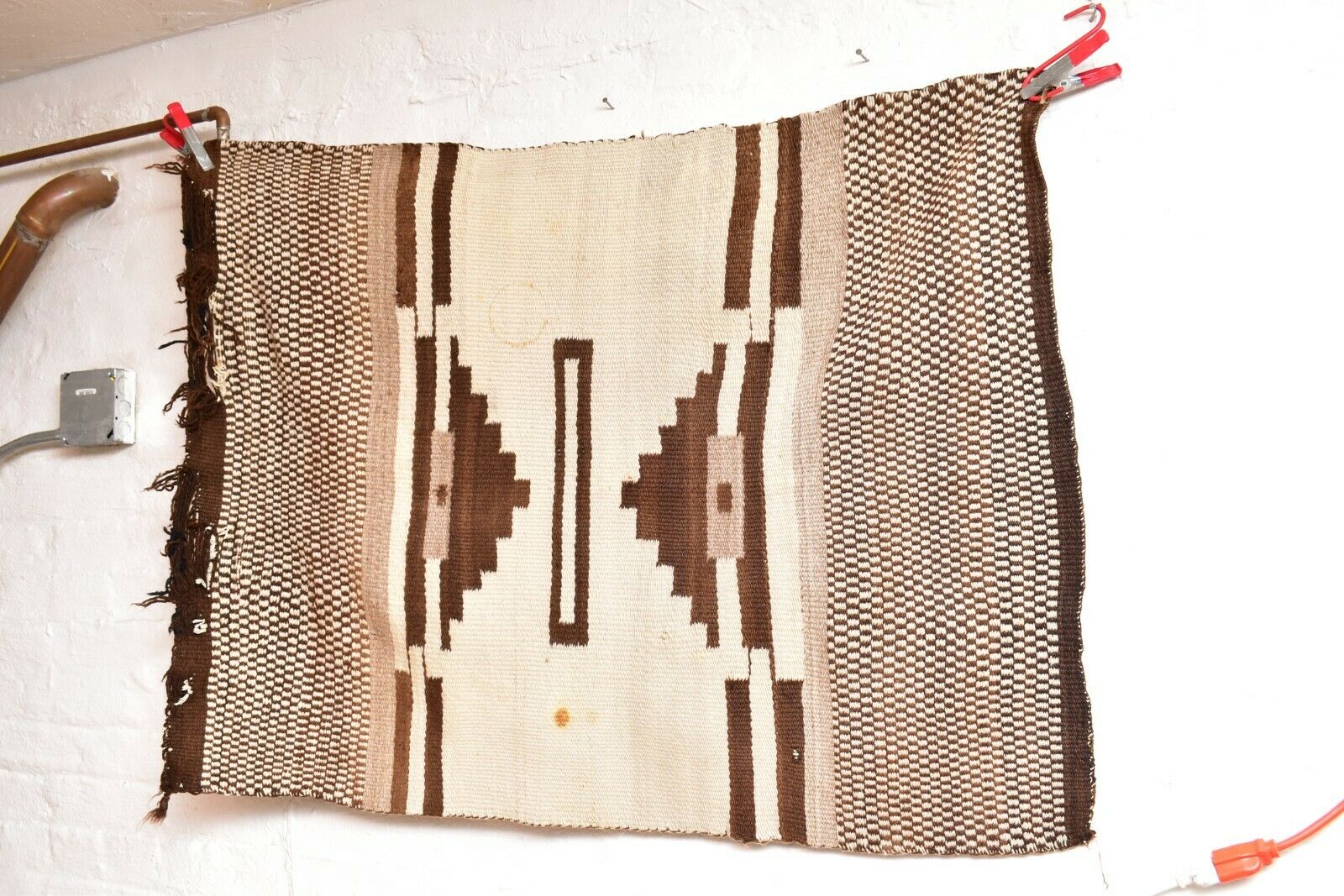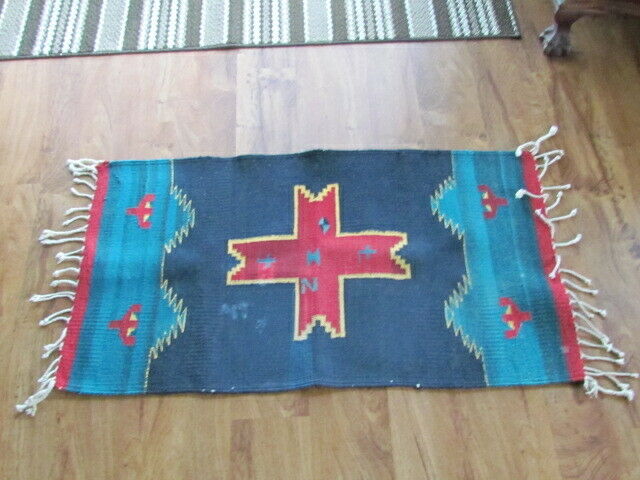-40%
SUPERB NAVAJO TEEC NOS POS TRADING POST RUG,ORIGINAL FOUTZ TAG,MID 20TH C,MINT!
$ 660
- Description
- Size Guide
Description
SUPERB NAVAJO TEEC NOS POS TRADING POST RUG, ORIGINAL FOUTZ TAG, MID 20TH C, MINT CONDITION!Beautifully woven vintage TEEC NOS POS rug by Myra Tsosie. This rug was hung throughout its life and has sleeves sewn on back that can be easily removed.
Biographical Note
Brigham Young decreed in the 1800s that the Foutz family should move from Knab, Utah to colonize the Tuba City area in Arizona Territory. The government uprooted the extended family next when their Tuba City properties were included in the Navajo Reservation. The group relocated to northwestern New Mexico. About 1915, Jim Foutz, together with three others, formed a Progressive Mercantile Company at Kirtland to furnish general supplies to Indians and settlers. As a teenager, Russell Foutz worked with his uncle Jim at Progressive Mercantile, stocking merchandise and selling. The firm prospered, and so did the expanding Foutz family for soon over 20 family members were operating trading posts on and near the Navajo Indian Reservation. Later, Russell joined his parents, Alma and Harriet Dustin Foutz at a remote trading post northwest of Shiprock, New Mexico, called Teec Nos Pos. This was an old time post where supplies were baretered for sheep, wool, and rugs, for in thre 1930s virtually all trade was by barter. In so doing, Russell gained apprecation for the Navajo arts, especially weavings. He traded for them based on value by the pound- at 75 cents to .50. A brother, Edwin Luff Foutz, helped Russell at Teec Nos Pos. But, despite Edwin's precaution to keep windows open for good air circulation in the trading post "bullpen" he fell victim to spinal meningitis that swept the area, dying in 1939 at age 30. The old post burned and the Indians met to consider whether they should allow it rebuilt. One spoke of Russel; "We know all White men cheat us. But this man we know. He just cheats us a little bit. I think we should keep him." And they did.
Measures approximately 32” x 44”. Fresh to the marketplace.
Everything guaranteed as stated. Shipping includes insurance.
IN
an effort to assist Buyers with understanding the way I describe the condition of Navajo weavings that I’m selling on ebay, I spoke with Navajo textile author and expert Tyrone Campbell about his ‘Classification Categories for Condition’ that he first published in his NEWSLETTER in 1981.
After discussing with him that we may have to tweak it a bit because its been 40 years since it was originally comprised and has gotten nearly impossible to find weavings in excellent, let alone mint condition these days, I concluded, what the hell, why mess with a good thing. It’s a standard worth sticking to! So here it is as originally written (and with permission to reprint from Tyrone, July 2020).
+++++++++++++++++++++++++++++++++++++++++++++++++++++++++++++++++++++++++++++++++++++++++++++++++
“CLASSIFICATION
CATEGORIES
FOR DETERMINING PHYSICAL CONDITION
FRAGMENT: Any portion of an entire weaving.
DETERIORATED: Heavily damaged, warps exposed, selvage missing, large holes, serious fading or running, corners or areas missing.
AVERAGE: Shows floor wear or small holes, some selvage damage, very minor bleeding, etc.
GOOD: Above average classification may still show use, but not broken warps. In some cases a very small hole or two or a minor selvage break or two is acceptable.
EXCELLENT: No holes, no bleeding or fading, no exposed warps or serious selvage damage.
MINT: This classification means that the textile is in pristine condition.
NOTE: In the case of rare weavings we will up-grade the condition classification from Average to Good or from Good to Excellent, but in no case to Mint or from Deteriorated to Average condition.”
From THE TYRONE D. CAMPBELL NEWSLETTER, Published at Albuquerque, N.M., 1981.
++++++++++++++++++++++++++++++++++++++++++++++++++++++++++++++++++++++++++++++++++++++++++++++++













